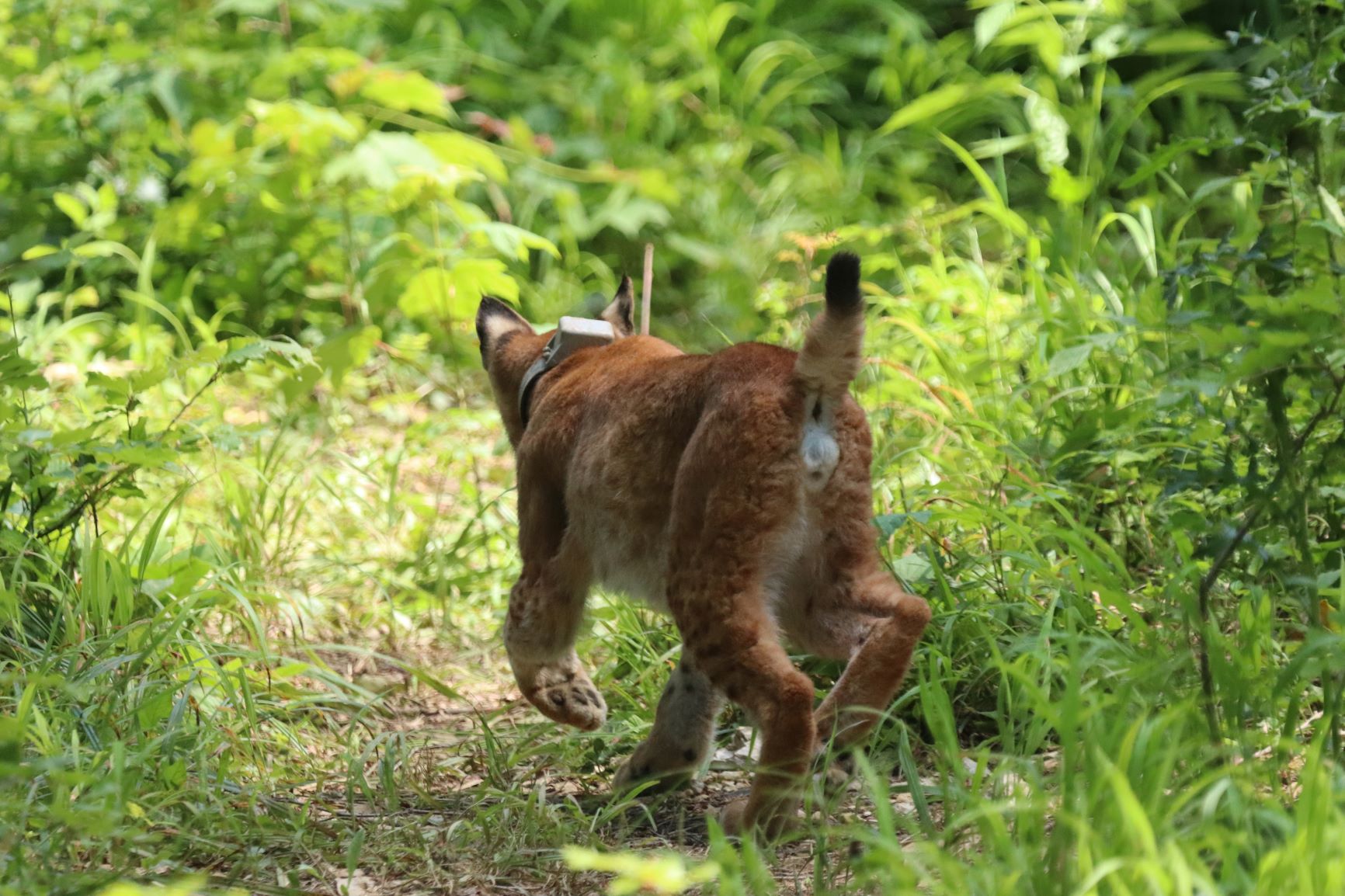Maks is a young lynx that was released in June this year in Snežnik forests and is currently establishing a territory in the Javorniki area. Since the release, he has managed to catch several roe deers, on the last census of his prey, we found out that this time he caught a fox.

Remains of lynxes prey – a fox. Photo: Lan Hočevar, LIFE Lynx
The diet of the lynx in the Dinaric Mountains is mostly based on ungulates, especially roe deer, but sometimes they also prey on red deer or chamois. In addition to ungulates, there are other, smaller species on the menu. Among them, the most important is the dormouse, especially in years with a good acorn yield, such as this year. Foxes are the most common prey of lynx among smaller carnivores and in Slovenia, they represent around 4% of the lynx’s diet. We have also noticed that foxes and other smaller species are more often predated by younger lynxes, so it is not unusual that Maks has caught one.

Lynx Maks. Photo: Miha Krofel, LIFE Lynx
Although encounters between a lynx and a fox can be very dangerous for a fox, this obviously does not deter foxes from stealing the remains of lynx prey. The fox is even the most common species we have observed among scavengers that feed on the remains of lynx prey.
This time, Maks ate the fox almost completely, leaving only its head, tail, and skin. However, it sometimes happens that a lynx does not eat a fox, but only kills it. The reason for this is in the reduction of competition for food, professionally called intraguild predation.
Foreign research has shown that lynx can be an important factor in regulating fox populations. In Scandinavia, for example, lynx have been estimated to prey on up to 10% of the entire fox population and account for as much as 50% of fox mortality. There, the local extinction of lynx in the 20th century also led to an increase in fox populations.
